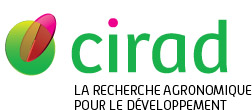Hautefeuille Claire, Munoz Facundo, Dauphin Gwenaelle, Peyre Marie-Isabelle, Goutard Flavie.
2023. Risk assessment on the between-farm spread of avian influenza in the French broiler and layer production networks.
In : 22nd World Veterinary Poultry Association (WVPA): Book of abstracts. WVPA
|
Version publiée
- Anglais
Accès réservé aux personnels Cirad Utilisation soumise à autorisation de l'auteur ou du Cirad. 612054.pdf Télécharger (669kB) | Demander une copie |
|
|
Version post-print
- Anglais
Accès réservé aux personnels Cirad Utilisation soumise à autorisation de l'auteur ou du Cirad. WVPAC_2023_risk_assessment_AI_France.pdf Télécharger (62kB) | Demander une copie |
Résumé : Since 2015, the French poultry production has been threatened almost every year by a reintroduction of the highly pathogenic avian influenza (HPAI) H5 viruses. In the 2021-2022 season, the number of poultry outbreaks in France accounted for half of the total number of outbreaks in Europe. After four epizootic waves, HPAI viruses seem to stay endemic in the European wild bird population and represent a continuous threat to the French poultry production. These events have mainly affected fattened duck farms but also turkey, layer and broiler farms. If some risk assessment studies have been conducted on French duck farms, no work has been done on broiler and layer farms. Due to the broilers production process (all-in/all-out production system), broilers are often considered less exposed to the risk of avian influenza virus spread than other productions even if the broiler sector is the main poultry sector in France. Layers have the longest life span of any poultry production, which is often considered a higher risk for disease introduction. The objective of this work was to assess the risk of transmission of avian influenza (AI) virus from a farm to another within the French broiler and layer production networks. This study used the OIE risk assessment framework. We structured the French broiler and layer production networks using respectively eight and seven different types of farms (the combinations of selection/production, indoor/free-range, integrated/independent) which were considered according to their biosecurity level. We assessed the transmission risk through eight different pathways focusing on indirect contacts: human in direct contact with birds, chick transport, bird collection, feed delivery, manure management, dead bird management, shared material and egg management. After developing a tree of farm-to-farm transmission scenarios for each transmission route, data were collected through literature review or expert elicitation. Two separate questionnaires were developed according to the experts' field of expertise, on AI spread (6 experts), on the French broiler (7 experts) and layer (5 experts) production networks. The experts' estimates were combined using a beta distribution weighted by their level of expertise. A Monte Carlo iteration process was used to combine the different probabilities of the scenario tree and to assess the risk of transmission. The risk of transmission of AI was highest between indoor production farms. Most free-range and indoor integrated broiler and layer farms were considered to have a good biosecurity level, while the level of biosecurity was considered lower on independent farms. Pullet farms were also considered to have a good biosecurity level. Even if breeder farms were assessed to have a high biosecurity level, the risk of inter-farm transmission for this type of farms was higher than for free-range broiler farms. Integration within the same farmers' association increased the risk of contact between two farms through human contact (e.g. veterinarian or technician) and the feed transport. Transmission pathways involving direct contact with a potential source of infection (i.e. manure truck or dead bird management) were considered the most likely to introduce or release the virus at all biosecurity levels. Transmission pathways without any direct contact with adult birds or a potential source of infection (i.e. chicks, eggs and feed) were considered less likely to introduce or release the virus at all biosecurity levels. This work provides a comprehensive picture of the risk of HPAI virus spread within the French broiler and layer production networks. This is the first work considering all production types and integration levels in given poultry production networks and the risk of transmission among them. This work focused on the relative risk of transmission between-farm through indirect contact, as there are no live bird movements between broiler and layer farms (all-in/all-out production system). Even so, this risk assessment study showed that there is a risk of HPAI virus transmission between farms and that this risk was highest for integrated indoor farms. This work provides insights that can be used to control HPAI in France.
Auteurs et affiliations
- Hautefeuille Claire, CIRAD-BIOS-UMR ASTRE (FRA)
-
Munoz Facundo, CIRAD-BIOS-UMR ASTRE (FRA)
 ORCID: 0000-0002-5061-4241
ORCID: 0000-0002-5061-4241
- Dauphin Gwenaelle, CEVA Santé animale (FRA)
-
Peyre Marie-Isabelle, CIRAD-BIOS-UMR ASTRE (FRA)
 ORCID: 0000-0002-0887-3418
ORCID: 0000-0002-0887-3418
-
Goutard Flavie, CIRAD-BIOS-UMR ASTRE (VNM)
 ORCID: 0000-0002-8618-4132
ORCID: 0000-0002-8618-4132
Source : Cirad-Agritrop (https://agritrop.cirad.fr/612054/)
[ Page générée et mise en cache le 2025-02-27 ]




